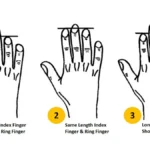Many people ask How often I should do Pilates. It is very much a common question. The answer is not simple because it depends on a lot of things like goals or time in hand. Doing it too little will not help; doing too much will make you tired, or you will get hurt. This blog will tell you the right way to make a Pilates routine that suits your life and body goals.
Factors That Influence How Often You Should Do Pilates
Fitness Goals
Your goals are key to how much Pilates you do and how often you need workouts. Like, if you want to lose weight or become flexible, you will need more or fewer sessions, it depends.
Experience Level
Beginners should not do too much; they need rest to let the body learn the new moves correctly. Advanced people can do more often and stronger sessions because their body is already ready for it.
Type Of Pilates
Some do Mat Pilates while others use the Reformer machine, which is a bit more intense and needs a studio. The type of Pilates matters because it changes how your body reacts and how often you can do it safely.
Overall Lifestyle
If you have stress already or sleep badly, you may not recover easily and get hurt. Other workouts like running or lifting also make the body tired, so Pilates must fit in properly.
A Journal of Bodywork and Movement Therapies in the year two thousand twenty showed that people doing Pilates three times in week for eight weeks had better strength and were more flexible.
Recommended Weekly Pilates Frequency Based On Goals
General Wellness And Mobility
You can do it two or three times every week, which helps in moving your body better and fixing posture. It improves how your joints work and builds body awareness slowly without extra stress.
Weight Loss And Body Toning
Doing Pilates three or four times in one week will help burn fat if you follow the food plan and walk. With cardio, it becomes a strong combo, and the body gets toned with regular moves and core work.
Injury Rehabilitation And Pain Management
Only one or two sessions with an expert help you recover and avoid mistakes in movement. It helps in healing gently and builds control and awareness for further fitness. A team at the University of Melbourne conducted a study with back pain people they showed showing better in twelve weeks with two sessions weekly.
Signs You Are Doing Pilates Too Often (or Not Enough)
Symptoms Of Overtraining
If you feel tired all day or angry, then not sleeping right, you might need to rest more. Every workout must help your performance go up, not stay the same, or go down over time.
Plateaus In Strength Or Flexibility
If you do Pilates for many weeks but cannot see any change it might mean you need to try new types. Your body gets bored with the same, so you need to add a challenge by changing speed, reps, or tools.
Motivation Levels Dropping
A sudden feeling of not wanting to move or go to class may mean overdoing workouts. You can get burned out when not giving a break and staying away from goals. Pilates Anytime app saw that people doing five times or more in one week without breaks had joint pain in the wrist and back.
Pilates Frequency For Different Experience Levels
Beginners: Start With 2 Sessions/week
Allows time for recovery, learning proper form, and building core strength progressively. This balance prevents injury and solidifies foundational movement patterns.
Intermediate: Increase To 3–4 Sessions/week
At this level, your body can handle more volume and variety in workouts. Focus can shift toward toning endurance and dynamic movements.
Advanced: 4–5 Sessions/week
Advanced practitioners can integrate complex routines and more ambitious forms, such as Reformer or advanced Mat Pilates. Variety and periodic rest become critical to maintain gains.
Athletes Or Cross-trainers: 1–2 Sessions/week As Supplemental Training
Use Pilates to enhance mobility, core strength, and injury prevention. It balances high-impact sports and supports joint integrity.
Rehabilitation Clients: 1–2 Personalised Sessions/week
These sessions must be adapted to medical needs and mobility restrictions. Progress is often slower but can yield life-changing outcomes over time.
Benefits Of Consistent Pilates Practice
Improved Posture And Core Stability
Pilates builds muscles in your belly and spine, which makes you stand better and feel stronger. You will see that you sit and stand with less pain and move with more control each week.
Reduced Risk Of Injury
Good form and right alignments help all your joints and parts stay working. You also learn how to move in a smooth way and avoid too much pressure in one area.
Mental Clarity And Mind-body Awareness
Doing Pilates often helps your brain focus more and causes less stress and more smiles. Moves are slow and mindful so the brain follows the body and both get benefits inside. Pilates Method Alliance said in a report that people doing three times each week saw twenty one percent better balance test scores.
Scheduling Pilates Around Other Workouts
Pilates As A Standalone Routine
If you are not doing other workouts, Pilates is enough for a full body and can show big gains. It gives strength and flexibility by itself and is safe for all fitness levels.
Pilates With Cardio
When you walk or swim, or cycle and add Pilates, your heart health and body shape improve faster. You can do Pilates on the day after cardio or the same day for a shorter time; both ways work.
Pilates With Strength Or HIIT
When doing heavy gym or fast workouts use Pilates as recovery it helps you stay mobile. Muscles can stiff from lifting so slow Pilates helps fix balance and realign postures. ACSM did a study and found players who do two times of Pilates per week had less injuries or wrong muscle pressure.
Conclusion
Pilates is not a one-size plan; it changes as your experience, schedule, and main goals keep changing. You get more progress if you stay regular rather than going all out and then stopping. Your routine should be like your body, flexible and ready to adapt to the changes you go through. Start with two or three sessions each week and let your body tell you what it needs next month.
Top Articles




